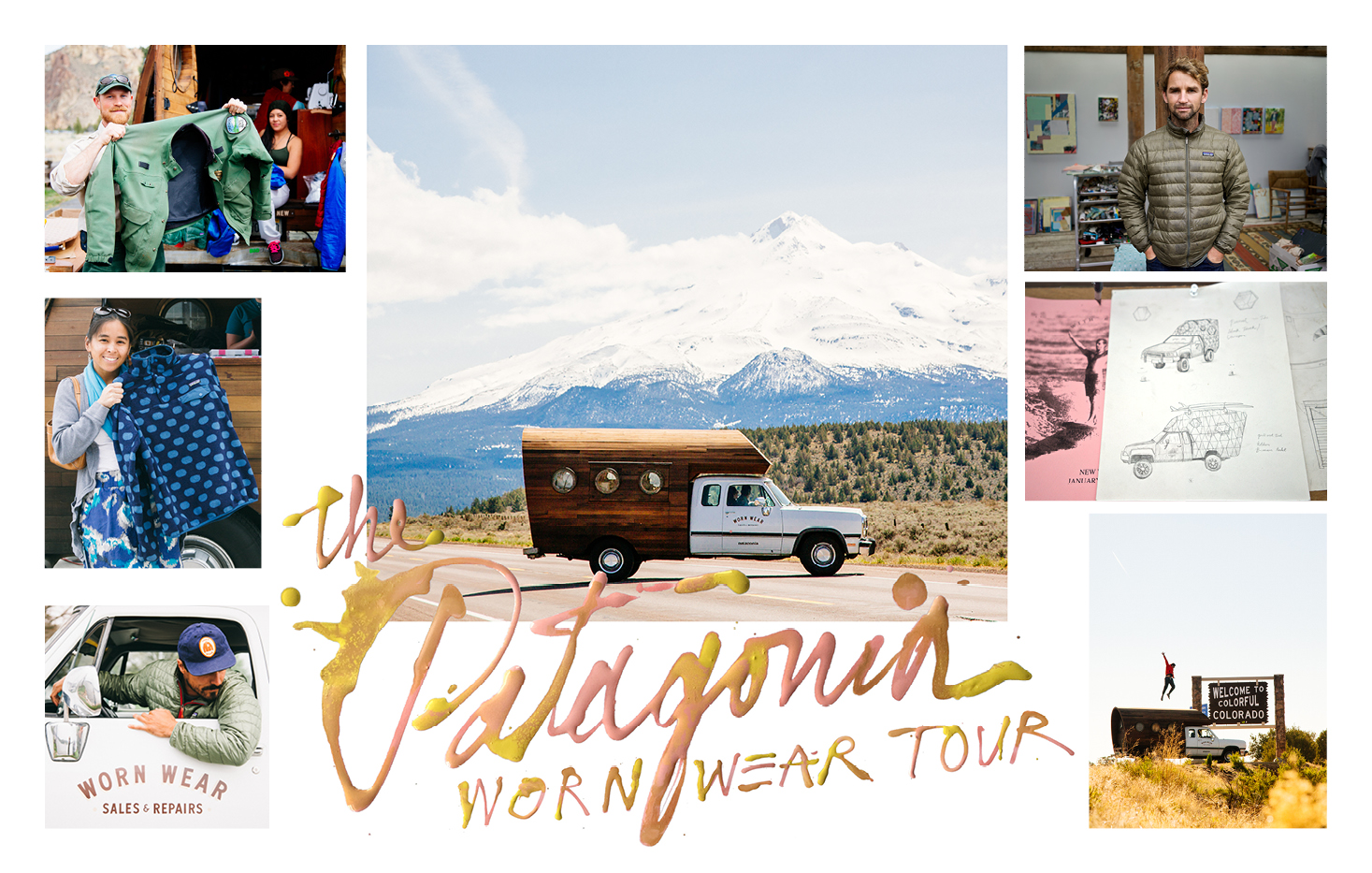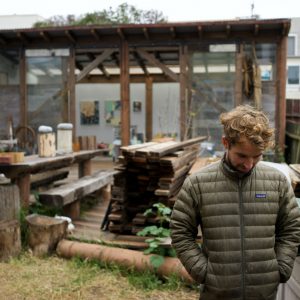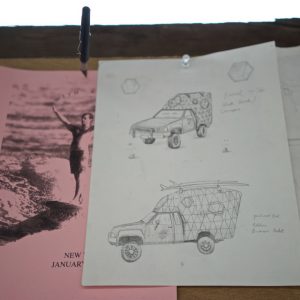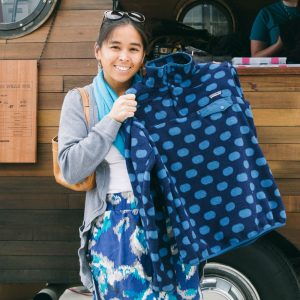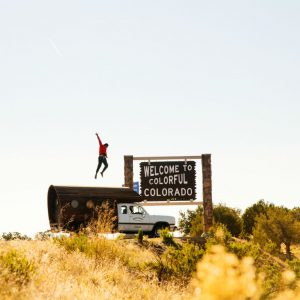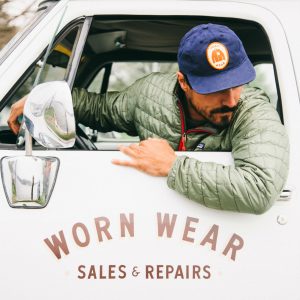Reliable clothes are trusted friends. They’re with you through it all: nights out, summits reached, and wipeouts survived. Each experience leaves its mark on you and your gear. Concert t-shirts and broken-in jeans make the cut, but the clothes we take outdoors create the most visceral attachments. Patagonia gets that.
They understand the sentimental attachment we have to our well-used apparel, even when it’s nearly destroyed. For years, they’ve been quietly repairing Patagonia gear in Reno, Nevada and returning it ready for its next adventure. This spring, the brand took repairs on the road for the “Worn Wear” U.S. tour. Combining revitalized trucks with mobile repair studios, Patagonia set out from their Ventura, California campus to traverse the country, making onsite fixes and documenting the stories behind them.
Patagonia’s Product Responsibility Analyst Nellie Cohen and her team spent the last year planning the logistics of the trip. The genesis for “Worn Wear” had its start in 2005, rooted in the “Common Threads” program, which allowed Patagonia customers to turn in their old apparel to be recycled and remade into new textiles. A noble idea, but according to Nellie, “We learned that our apparel lasted a really long time and most of the items that came back didn’t need to be recycled, just repaired.” Armed with new insight about their consumers, Patagonia built the largest apparel repair facility in the country. They also launched in-store repair locations and a growing library of free repair tutorials on iFixit. They made all repairs free, whether you bought it yourself, found it at the thrift store, or inherited it from an old flame. As Nellie told us, “the Patagonia label is your receipt.”
As the repair services evolved, so did the storytelling. In 2013, Patagonia Ambassador Keith Malloy and his wife Lauren launched the “Worn Wear” blog to let customers tell the individual stories behind their clothes. In November of that year, they released a video compiling all of these narratives, tapping into the emotional connection that develops as experiences are collected.
Over the next two years, Patagonia continued to highlight customers’ “Worn Wear” stories. In 2014, Monika McClure from Patagonia began talks with Jay Nelson, a San Francisco artist, to create a store installation in contrast to the vapid consumerism of Black Friday. Jay’s experience building whimsical wooden campers quickly focused the conversation to taking “Worn Wear” on the road. A plan came together: Jay would build a mobile repair studio on the back of a vintage Dodge pickup and Brody Travel Supply would build a mobile retail shop within an old box truck. Both would run on biodiesel and be solar-powered. Jay took up residence at the Patagonia campus to build the “Worn Wear” repair truck at its spiritual home.
Jay most often uses reclaimed wood, the perfect fit for the Patagonia truck. We met him at his San Francisco studio to get his perspective on the project: “Often working with a company there are compromises, but with Patagonia, I was totally behind the ethos.” Just like a patched-up fleece, reclaimed wood tells a story, salvaged when it could have been destroyed. Nelson chose to use his favorite timber, redwood, for the Patagonia truck. He loves it because it’s soft and pliable, and “is so essentially San Francisco. One hundred years ago, everything was built out of redwood in the Bay Area.” He’s always looking for material that would otherwise go to waste.
For the Patagonia truck, Jay had a friend up in Point Reyes with giant redwood wine barrels to spare. To Jay, it made sense for the truck to have a hint of California and the potential to ripen with age. Materials connect the dots between place and experiences, past and future.
Visiting Jay’s studio in the Outer Sunset neighborhood of San Francisco, it’s clear he’s an artist who takes his cue from his materials. Surfboards, salvaged furniture and reclaimed lumber are stacked around the yard between the airy workspace he shares with his wife and their home. Constructed from salvaged posts, the studio is pole-framed with sliding glass doors and a strategically placed skylight to combat the perpetually foggy weather. Jay starts his process with sketches, but the character of the material tells him what to do.
Jay’s personal materials also have stories to tell, starting with memories he’s made wearing his Patagonia puffer jacket. Splattered with paint from countless projects and punctured with holes, Jay reminisces about experiences he’s had over the years while working in the jacket. These tales mirror how Patagonia has used the “Worn Wear” Instagram account to uncover customer stories across the country, providing an intimate sketch of the people who are the bedrock of the company’s success. While the tour pauses in Boston and the first iteration comes to a close, we’re waiting eagerly to see what the next “Worn Wear” evolution will be.
This article was originally published in RANGE Magazine Issue Three.
Images by Jon Gaffney and Donnie Hedden.
